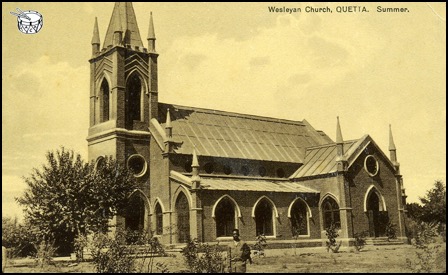BELGAUM
Pictured on the old postcard below is the cantonment garden in Belgaum, which is now in Karnataka state, south-western India. The black-and-white photograph does not do it justice, but it is nevertheless clear that the well-tended garden was stocked with benches, lampposts and decorative structures, as well as lush vegetation. It must have been a wonderful space in which army families stationed in Belgaum could relax.

BELLARY
The sepia-toned postcard below, whose Bellary Cantonment postmark gives a date of 11 July 1909, is labelled ‘Fort Tank Bellary India 1809 108˚ in the shade’, this being one of the water stores that served Bellary’s inhabitants. Bellary, which is today in Karnataka, came under British administration in 1800, and became the headquarters of the Bellary District, in the Southern Division of Madras, in 1840. The Imperial Gazetteer of India (1909) notes, ‘Until the British made Bellary a cantonment it contained little but its fort’ (actually the upper and lower forts), the Edinburgh Medical and Surgical Journal (1847) stating, ‘About 100 yards from the fort on the south side is a large tank, which when full is upwards of three miles in circumference; but during the dry season is reduced to half that size, and the ground thus exposed is said to give rise to noxious exhalations’. Bellary Cantonment, situated to the west of the fort, encompassed accommodation for those stationed there and their families.

TACA is most grateful to Beverly Hallam, of the Families in British India Society (FIBIS), for permission to reproduce the photograph below. Dated 1905, it shows a group of British soldiers, their wives and an army child (as well as a pet dog) sitting in a carriage in Bellary, in Karnataka, India, which was then a British cantonment. The photograph is one of a set displayed on the FIBIS Fibiwiki belonging to Julian Macey, whose father-in-law, Ernest Lee, served in the 1st Battalion, Essex Regiment, including one that shows other army children attending the wedding of Sergeant Major Frederick Howlett in Bangalore in 1903 (click here to view it).
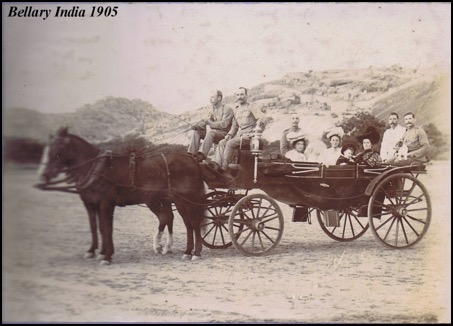
JUBBULPORE
The black-and-white postcard below presents an overview of the Hugh Rose Barracks in what is today Jabalpur, in the central Indian state of Madhya Pradesh, but was called Jubbulpore at the time that the photograph was taken. Having come under the control of Britain in 1818, Jubbulpore was the location of the headquarters of a brigade in the 5th Division of the Southern Army formed at the start of the twentieth century, and would consequently have been familiar to many army children.

The postcard below, dating from around a century ago, shows families enjoying 'band night' in the cantonment gardens at Jubbulpore.

Here is another view of the cantonment gardens of Jubbulpore. A cannon adds a military touch amid the benches and trees.
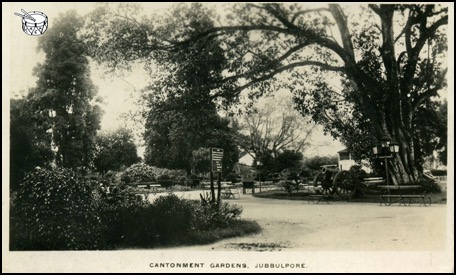
JUTOGH
As its label indicates, the old black-and-white postcard shown below presents a view of Jutogh Cantonment. Located in the Shimla (formerly Simla) district of the northern Indian state of Himachal Pradesh, the cantonment was established on a hill amid the forests of the western Himalayas in 1843. British mountain-artillery and infantry units were stationed at Jutogh during the summer, and the houses photographed here are likely to have been home to officers’ families.
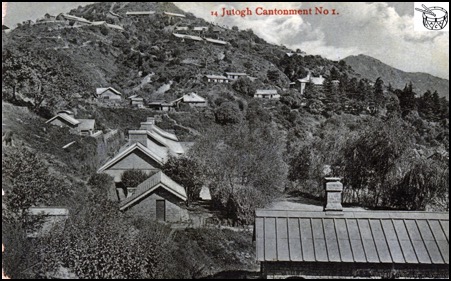
Its caption tells us that the view presented by the Indian Raj-era postcard below is of Jutogh Cantonment Bazaar.
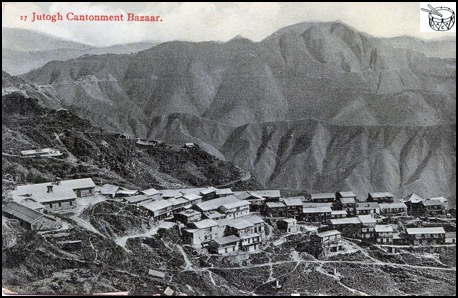
MHOW
The colourful postcard below presents a snapshot of how the cantonment at Mhow (today called Dr Ambedkar Nagar), in the central Indian state of Madhya Pradesh, looked in around 1880. Discernible amid the camels and carts are a few British soldiers in the distinctive white uniforms and sun helmets that were worn in hot climates during the second half of the nineteenth century. Mhow was the headquarters of the Southern Command’s 5th (Mhow) Division from 1913, and the cantonment was established in 1818. Click here for a little more on its history, as well as a list of regiments and units stationed at Mhow between 1840 and 1948, compiled by Dev Kumar Vasudevan; and here for further Mhow-related links courtesy of FIBIS.
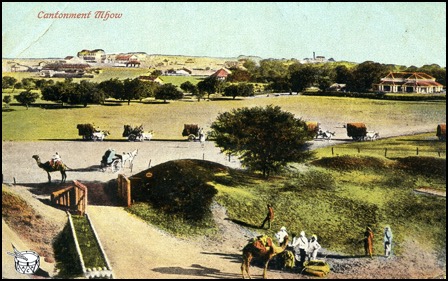
The black-and-white postcard below was produced by Tuck’s. As the caption on the front tells us, it shows ‘Mhow Cantonment Garden’.

‘Greetings from Mhow, Central India.’, reads the legend on the front of the black-and-white postcard below, which was published by Raphael Tuck & Sons; it has a divided back, which means that it dates from after 1902. The central photograph shows ‘Mhow Cantonment Garden’, while, moving clockwise from the top left-hand corner, the images in the four corners present views of a bullock cart; the dhobi ghat (literally, ‘laundry bay’ in Hindi’), ‘near fort’; ‘native ayahs with children’ (presumably army children); and the infantry barracks.

QUETTA
As its label tells us, the black-and-white postcard below presents a summer-time view of Quetta Cantonment. Although its date is unknown, it’s probably safe to say that at the time that this photograph was taken, Quetta was in India (it had been absorbed into the British Raj in 1876). Following the partition of India in 1947, it became part of Pakistan, however, and is today the capital of the south-western province of Balochistan.
According to the Imperial Gazetteer of India of 1908, Quetta Cantonment then covered around 15 square miles, and was home to two British infantry regiments and their families, the garrison also comprising a number of other military units. For links to further information on, and photographs of, Quetta collated by the Families in British India Society (FIBIS), click here.
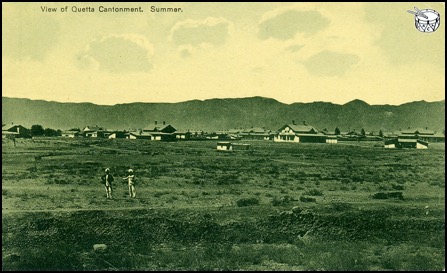
The entrance to the cantonment market at Quetta can be seen in the old postcard below.

The identifying information printed on the front of the photographic postcard below states that it shows Quetta Cantonment’s Wesleyan Church, pictured in summer. Although the year is not given, it is likely to have been before 1947, when Quetta was still part of India (it is now in Pakistan), and FIBIS estimates the date to be around 1910. This was one of a number of churches of different denominations in Quetta Cantonment that would have been attended by army children and their families.
